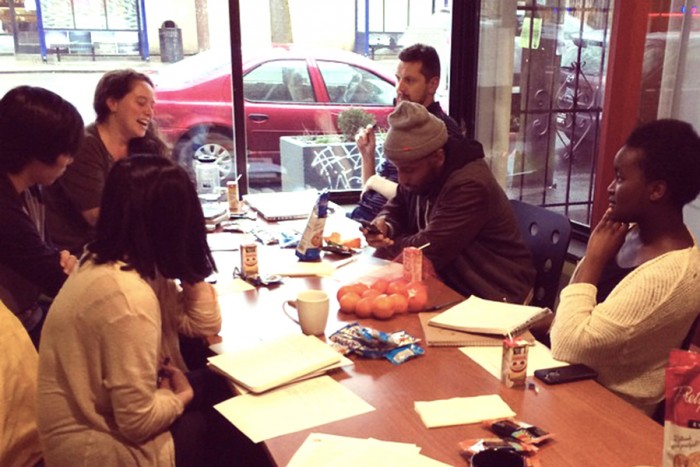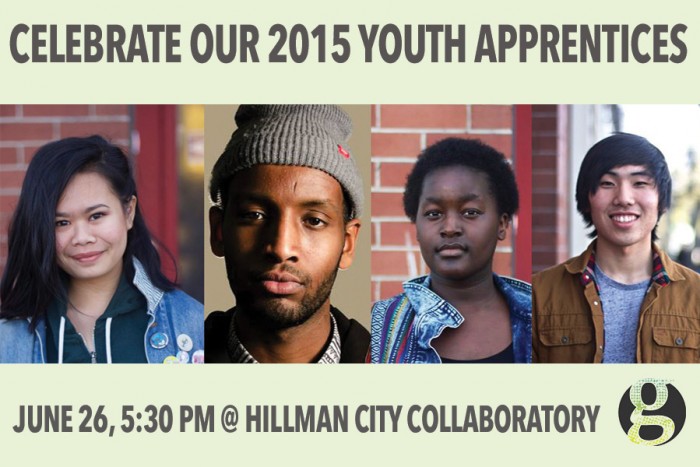Among the most enriching experiences I’ve had recently was serving as a mentor for The Seattle Globalist’s Youth Apprentice program.
Now in its third year, the program selects four aspiring journalists of diverse backgrounds — immigrants, people of color and other underrepresented voices — and incubates them in a four-monthlong program on the fundamentals of journalism. The schedule is tight with bi-monthly workshops and set assignments that build different media muscles, from features and photography, to news reporting and opinion pieces.
Yes, definitely not a “fetch-the-coffee” internship.
Not only does this rigorous training program introduce the young apprentices, ages 17 to 20, to journalism, it pays them to develop into published writers on The Globalist.
The talented, award-winning founders of The Seattle Globalist usually run the program with in-house staff members. So I was honored when they approached me as an outsider to serve as one of the four voluntary mentors. My task was to coach one Globalist apprentice to develop story ideas from inception to publication.

The four months flew by. Tomorrow, our apprentices are “graduating” and showcasing their work at The Hillman City Collaboratory, starting at 5:30 p.m. Between them, the apprentices have published a total of 10 articles on topics as diverse as the #BlackLivesMatter movement, lesser-covered and understood communities in Seattle and same-sex marriage. I can’t help but wonder why more media organizations haven’t discovered how investing in a program for young people of color pays dividends like no other. Here are three reasons why more media organizations would benefit from this:
1. The current media landscape has a vast gap waiting to be filled by young, diverse writers.
About 14 percent of journalists in the United States are people of color. Most well-known journalists come from a position of privilege, with elite schools bolstering their career success.
On the flip side, legacy media often loses out on covering important youth, immigrant and minority issues, even though the U.S. population continues to become more diverse. This large information gap is yet to be filled by social media.
Here’s where young people, and particularly those from diverse communities, have the most potential to disrupt traditional media.
As an editor, working with young people who have never written before professionally can be challenging.
Yet, once that effort has been put in, the resulting stories are just breathtaking. And they’re almost always stories that are told with depth and a unique understanding of communities that the media doesn’t always portray correctly.
Don’t miss these powerful portraits of what it means to be a Black woman in the Northwest, or find out about Grammy-nominated Seattle artist, Hollis Wong-Wear. Both stories were reported by 2015 Globalist Youth.
2. You develop a robust network of writers.
Not all our apprentices will go on to become journalists, although one of ours has just secured an editor-in-chief position on her college newspaper. But the thirst to tell stories and tell them well, lives far beyond a short apprenticeship program. Once you equip young, dynamic individuals with the basics of storytelling, you’ve planted the seed for telling stories that will last forever.
For many of our youth, the possibility of becoming journalists or simply storytellers, wasn’t even something they saw as an option. It’s inspiring to see that change in front of your own eyes.
Past apprentices have gone on to enter national documentary contests and win awards. Many develop a long-term relationship with The Globalist and write as contributors for the publication as they advance their careers. The publication benefits from building a stronger contributor network that continue to tell great stories from different vantage points. A win-win!
3. Working with youth builds management skills for editors.
In my limited experience with working with youth, I know it can be so fulfilling but also exhausting.
In the professional world we are taught to suppress our personal lives deeply so that we can excel. But when working with youth to accomplish professional tasks, it becomes clear that without tackling personal issues head on – for example family problems, breakups, friendship struggles and self-esteem issues – work suffers tremendously. Instead, when you work with someone and acknowledge their whole self, addressing their concerns personal and professional, they’re able to soar to new heights. It reminds you that we’re not robots and bringing our authentic selves to the table is the best way to deliver the best results.
This has been an incredible lesson in people management for me.
At the same time, going back to teach and learn the basics of journalism — how to structure stories, how to ask the right questions and how to develop story ideas — has made me a better journalist and editor.
As the 2015 apprentices head towards graduation, I know I have undeniably learned more from Alia, a talented student from Indonesia; Tim, a Korean-American film buff who heads off to college this fall; Joy, a Ugandan-American who is an aspiring nurse; and Jama, a photojournalist who tells great stories about the Somali-American community.


